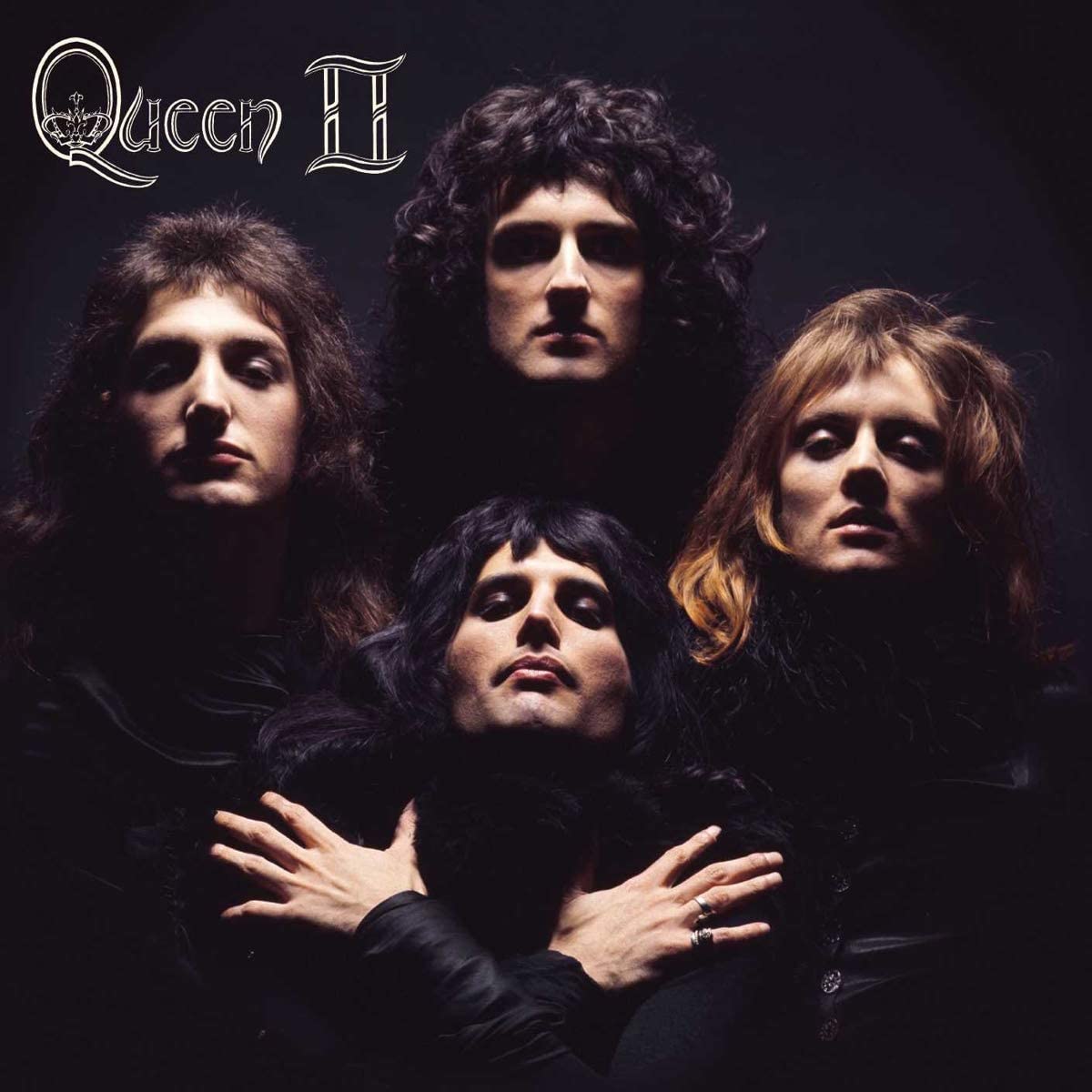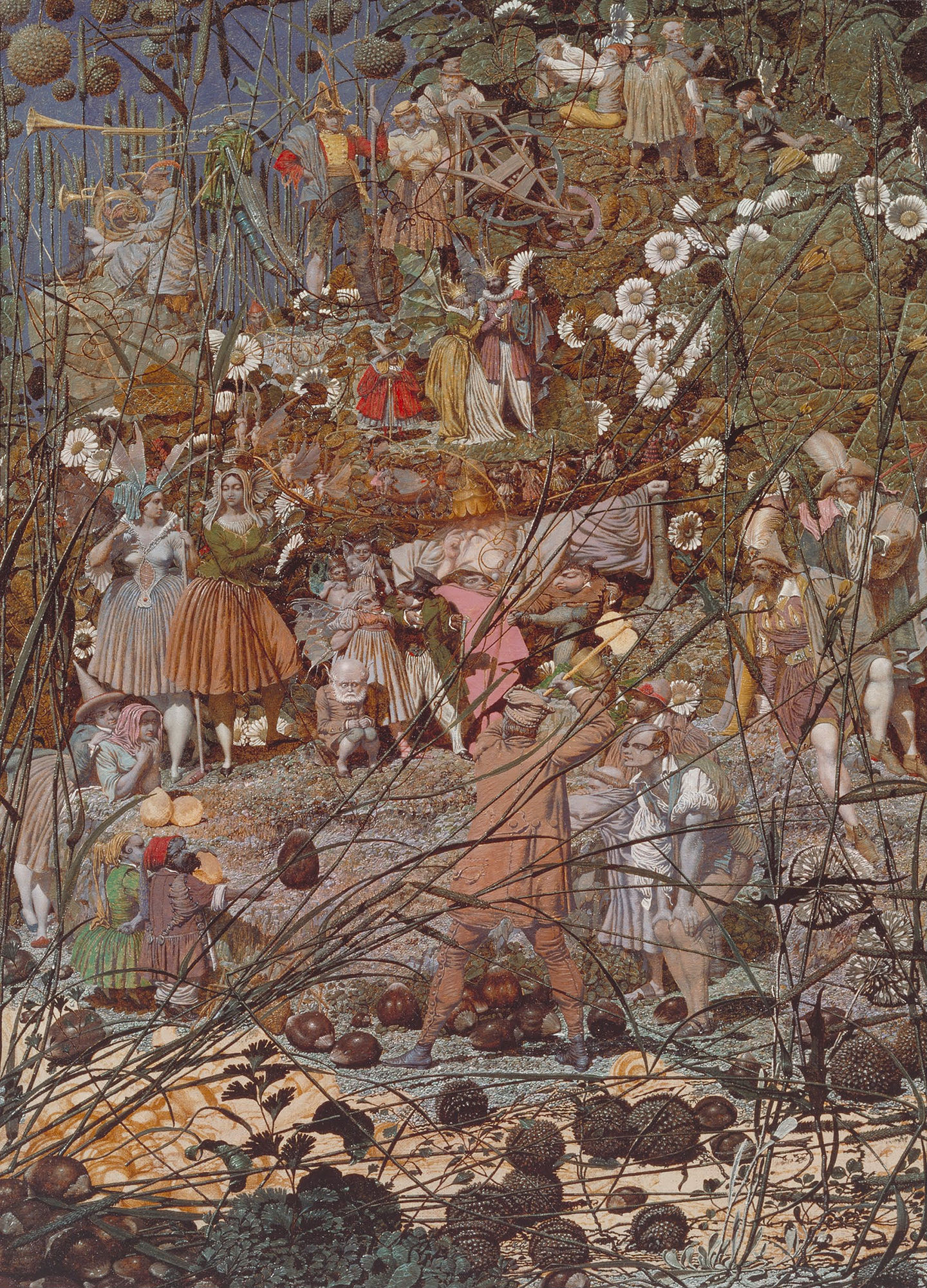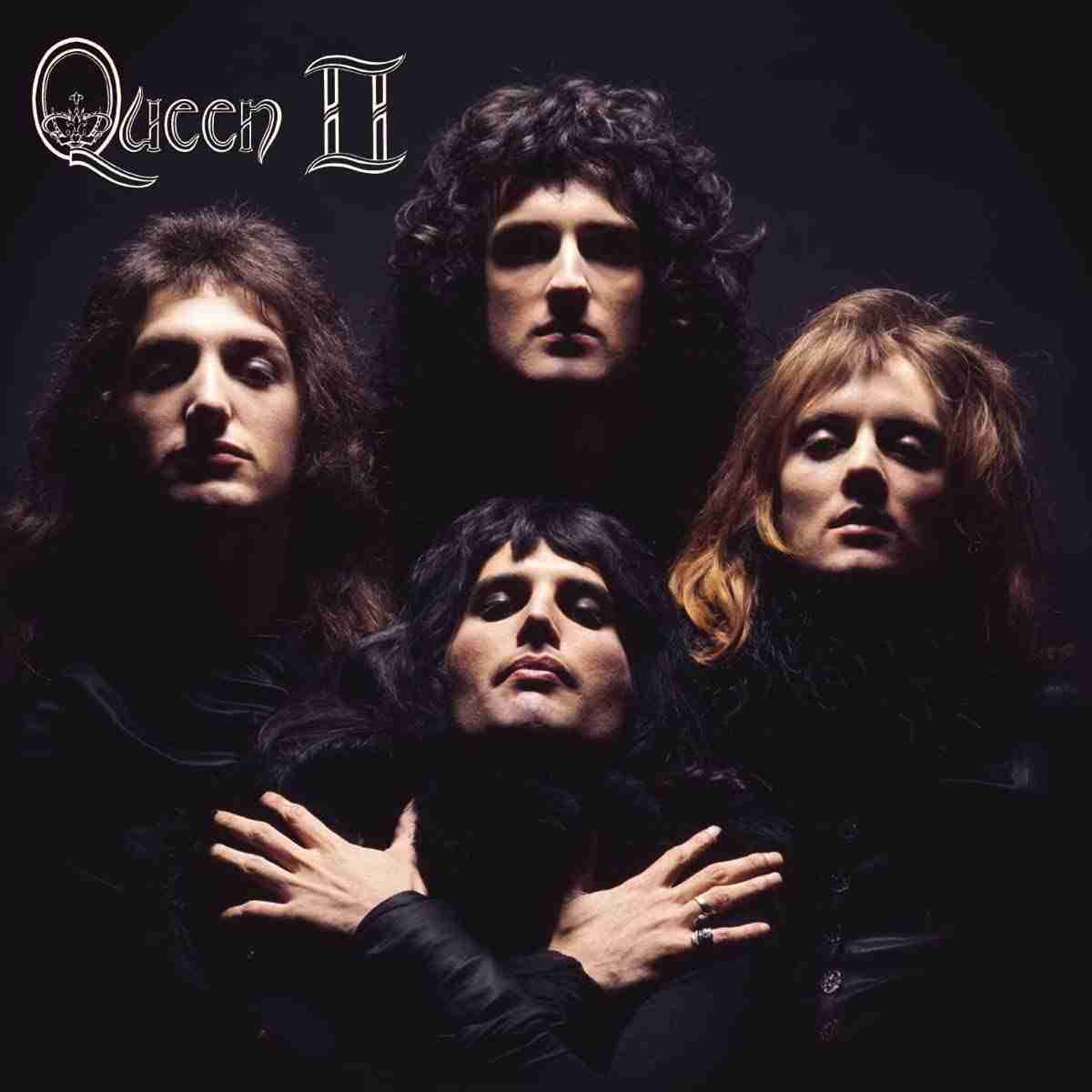Why You Should Listen to Queen II
When I first saw Freddie Mercury performing as a child, with his thick moustache and yellow leather jacket, I thought of nothing more than a famous rockstar my dad would listen to from time to time.
It wasn’t until I reached my teenage years when I watched a documentary on Queen’s frontman that I saw beyond the flashy façade of the self-professed ‘Great Pretender’. Queen’s earliest music, pre-fame and pre-moustache, reveal the gentler side of Freddie Mercury (as well as other band members May, Taylor and Deacon); in particular, the group’s experimental lyrical album, Queen II.

The iconic cover of the band’s eponymous second album is widely associated with its resurgence in the world-famous ‘Bohemian Rhapsody’ music video, which was released the following year in 1975.
As opposed to the Side A and Side B of conventional vinyl albums, Queen II is divided into a White Side and Black Side. The White Side is primarily Brian May’s composition – with the exception of the song ‘The Loser in the End’ written by drummer Roger Taylor – while the second half of the album, the Black Side, is solely Mercury’s creation.
Queen II was released before the fame of hits such as ‘Radio Ga Ga’ and ‘We Are the Champions’, and thus seems to offer an entirely raw and genuine account of Queen’s musical passion. When listened to chronologically, each song within the album flows inexorably into the next; without the temptation of Spotify’s shuffle play, the album’s original vinyl format would have seen this musical effect in full force.
White Side
Procession
The album’s introductory track is a solely instrumental composition in the form of a funeral march. The ominous and somewhat sombre opening of the album sets out a tone of mystery which is revisited in the fantastical songs of the Black Side of the album.
Father to Son
The first lyrical song of the album recounts a father recalling the patrilineal line. The second longest of Queen II, ‘Father to Son’ comes in at a length of 6:14. The song oscillates from a melodic lullaby to Queen’s typical rock style, in a similar way to the other epic song of the album, ‘The March of the Black Queen’.
White Queen (As It Began)
‘White Queen (As it Began)’ is one of the oldest songs on the album, written prior to Queen’s formation as a band. Brian May wrote the song during his time in Smile, the band from which Queen was born. The lyrics depict an ethereal unrequited love object, beautifully sung by Freddie Mercury’s delicate vocals, which was loosely inspired by Robert Graves’ poetic essay ‘The White Goddess’.
Some Day One Day
The first song to feature only Brian May on vocals, ‘Some Day One Day’ is one of the gentler songs of the album. Its overlaid electric guitars showcase May’s skill as a guitarist, songwriter and singer. One of the simplest of the album, the song’s soft melodies provide a smooth transition from the previous ballad.
The Loser in the End
Roger Taylor’s only contribution to the album as both vocalist and songwriter is typical of his style; ‘The Loser in the End’ features hard and heavy drums which contrast to the previous song, introducing a much harsher rock style that re-emerged in forthcoming songs such as ‘Sheer Heart Attack’ and ‘We Will Rock You’.
Black Side
Ogre Battle
The introductory song to Mercury’s half of the album, ‘Ogre Battle’ immediately places the Black Side of Queen II into a fantastical and eerie realm. The song is cyclical, in that the beginning of the song is the ending of itself played back in reverse; the absurdity of the track is evident from the very start. The song’s intensity and drama is the perfect introduction to Mercury’s following songs.

The Fairy Feller's Master-Stroke
One of my favourites of the album, ‘The Fairy Feller's Master-Stroke’ is a Baroque style song inspired by the nineteenth-century painting of the same name. Richard Dadd painted ‘The Fairy Feller's Master-Stroke’ while in a mental asylum from 1855–64. Despite its nine-year composition, the artwork remains unfinished. It is currently on display in Tate Britain; Mercury himself was captivated by the painting on a visit there. The song carefully ponders over each figure in the artwork, climaxing with the fairy feller himself, who strikes a large chestnut at the centre of the painting.
Nevermore
Despite being the shortest lyrical song of the album at 1:17, ‘Nevermore’ is a beautiful and melodic song in which the speaker laments over the loss of his lover. Similar to ‘The Fairy Feller's Master-Stroke’, this song seeks its inspiration from art and literature, taking its title from Edgar Allan Poe’s narrative poem, ‘The Raven’. The simplicity of the song directs our focus to Mercury’s passionate vocals which, along with the fragmented shifts in tempo, offer a beautiful, yet tragically universal, experience of heartbreak.
The March of the Black Queen
Perhaps the climax of the album, ‘The March of the Black Queen’ is often viewed as a precursor to Queen’s very own ‘Bohemian Rhapsody’. Coming in at 6:33, the epic song is the longest of Queen II, and is, to me, the quintessence of the band’s early 70s music. This song, along with ‘White Queen (As it Began)’, most clearly establishes the white/black duality of the album. The acyclic tempo and key changes are reminiscent of ‘The Fairy Feller's Master-Stroke’ and foreground the nonsensical yet compelling eccentricity of the album. The multifaceted song elaborately moves through dramatic scenes of hard rock and tranquil melodies. Even Queen’s drummer, Roger Taylor, recalled in regard to the song’s composition that “the tape had gone over the [recording] head so many times, overdubbing, that the oxide had worn off”. The song is lurid and absurd, yet captivatingly magical.
Funny How Love Is
‘Funny How Love Is’ is noticeably simpler than Mercury’s other songs in the album, particularly contrasting to ‘The March of the Black Queen’. Its repetitious lyrics provide a wholesome and sweet view of love. The song seems to both lyrically and musically derive from a 60s aesthetic, much more so than the rest of the album, providing a short and sweet break from the heavier songs of the Black Side of the album.
Seven Seas of Rhye
Queen’s first top 10 hit in the UK, ‘Seven Seas of Rhye’ is the most recognisable song of the album and prompted their first appearance on Top of the Pops. Like ‘White Queen (As it Began)’, ‘Seven Seas of Rhye’ was first conceived in the 1960s before Queen’s formation, Mercury describing its lyrics as “a figment of [his] imagination”. The song also features on the band’s first album in its instrumental form, with the intention of its completion by Queen II. From its distinctive arpeggiated piano introduction to its fantastical and epic subject, ‘Seven Seas of Rhye’ seems the perfect finale to such an extraordinary album.
Recent Posts
Why don't you check some of our other posts?


